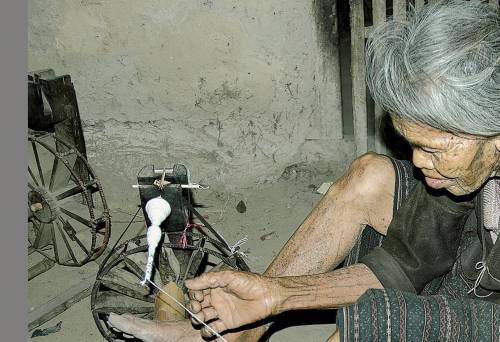Traditional Li textile techniques: spinning, dyeing, weaving and embroidering
Inscribed in 2024 (19.COM) on the Representative List of the Intangible Cultural Heritage of Humanity

The traditional Li textile techniques of spinning, dyeing, weaving and embroidering are employed by women of the Li ethnic group of Hainan Province, China, to make clothing and other daily necessities out of cotton, hemp and other fibres. In the absence of a written language, the patterns used on the textiles record the history and legends of Li culture as well as aspects of worship, taboos, beliefs, traditions and folkways. They are therefore an indispensable part of the cultural heritage of the Li ethnic group, allowing communities to strengthen their shared historical memory and cultural identity. The techniques involved, including double-face embroidery and single-face jacquard weaving, were traditionally passed down from mothers to daughters from early childhood through verbal instruction and personal demonstration. In the inscription in 2009 on the List of Intangible Cultural Heritage in Need of Urgent Safeguarding, it was noted that there were only 1,000 practitioners, mostly older people, and there were concerns about a reluctance among younger generations to acquire the traditional knowledge and skills, preferring modern fashion instead. Over time, the inter-generational transmission has been strengthened with the increased involvement of men. Li textile techniques provide a sustainable livelihood for families while improving their status and social recognition. They also promote mutual respect and dialogue among communities, which continue to grow, harvest and use the natural raw materials needed for the dyes and threads. The related techniques, knowledge and history have been integrated into formal education and are promoted through research and awareness-raising activities.









